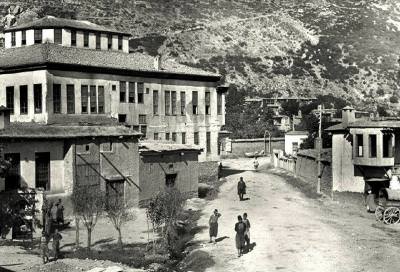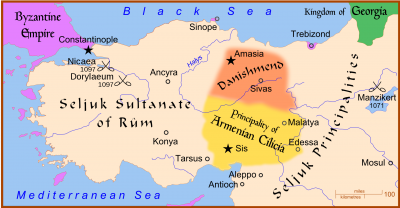Toponym
The county/district was known in ancient times and in the Middle Ages as Philomelion (ancient Greek) and Philomelium (Latin), respectively.
The Turkish name Akşehir literally means ‘white city’. In English usage other spellings of the name include Ak-Shehr, Ak-Shahr, Akshehr, Akshahr, Akshehir, and Aqshahr.

History
The foundation of Philomelion probably dates back to the Macedonian prince Philomelos, who lived in the third century B.C.
Cicero, on his way to Cilicia, dated some of his extant correspondence there; and the place played a considerable part in the frontier wars between the Byzantine emperors and the Sultanate of Rum.
During the time of the Third Crusade, on May 7, 1190, the area of Philomelion was the scene of the Battle of Philomelion between the Crusader forces of Frederick I and the Muslim Rum Seljuks. It became an important Seljuk town, and late in the 14th century passed into Ottoman hands. Under Sultan Bayezid I, the Ottomans conquered the city.
Armenian Population
On the eve of the First World War, there lived up to 6,000 Armenians in the kaza of Akşehir.[1]
Destruction
“In the principal town of the kaza of Akşehir, also called Akşehir, which had a big Armenian population, the deportations began on 20 August [1915] and went until October. The members of the first convoy, after travelling a short distance by rail to Ereğli, where the kaymakam, Faik Bey, the police chief, Izzet Bey, the commander of the gendarmerie, Midhat Bey, and Mustafa Edhem Bey stripped them of their belongings, continued their journey on foot as far as Osmaniye. They were left there until 23 October and were then sent off to Katma and the Syrian deserts. Of Akşehir’s 5,000 to 6,000 Armenians, 700 were allowed to remain in the town. In 1919, there were, furthermore, 960 survivors, almost all of the women and children, who had been abducted: three hundred were in Aleppo, 460 were in Damascus, and 200 more were scattered throughout Syria. One hundred young girls were also held by families in Akşehir.”[2]
